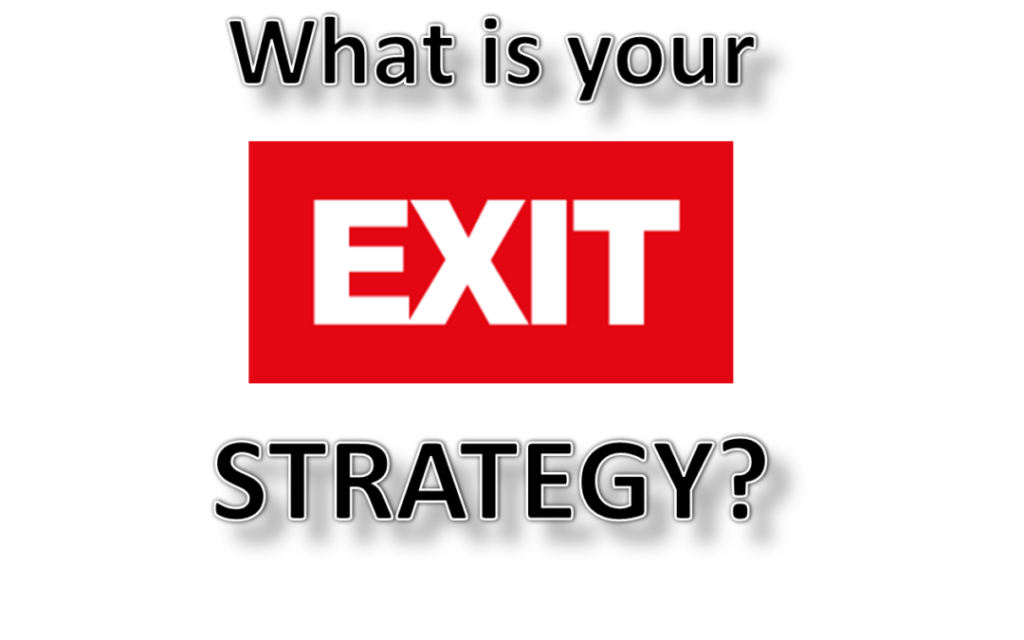5 Exit Strategies the CEO Optometrist Should Consider

An exit strategy is something that every practice owner should plan for. Whatever stage you are in your practice, you need an exit strategy. For you, as for any investor in a business, the questions are the same:
- When it’s time to move on and why?
- And how much money are you going to get?
- How are you going to get your money out of the practice?
Having an exit strategy worked out in advance helps ensure that you like the answers to those questions and gives you some control over your practice’s future. Here are five exit strategies for the CEO Optometrist to consider:
Keep it in the family
The dream of many practice owners, keeping your business in the family ensures that your legacy lives on and provides a living for your heirs.
This is when a practice owner transfers ownership to family members. It is still a sale, but the terms and nature of the transaction are usually very different.
The fact that the buyers are close to you makes this both easier and harder to complete. It is easier because you have a much better knowledge of the buyer; it is harder because you tend to be less objective about the buyer and are more likely to let your guard down in negotiations and planning.
Advantages
- Can make for a smooth transition by grooming a family successor.
- May allow for you to keep a hand in the practice in an advisory (or other) capacity.
Disadvantages
- Developing a family succession plan can be enormously difficult and lead to infighting among family members over ownership and/or participation in the practice.
- Family members may not have the skills (or interest) to take over the practice.
- Patients may not approve of new management or changes in the practice’s direction.
Merger & Acquisition (M&A).
This option is becoming more and more common and is one of the exit strategies practice owners may consider. M&A normally means merging with a similar company or being bought by a larger company.
This is a win-win situation when bordering companies have complementary skills and can save resources by combining. For bigger companies, it’s a more efficient and quicker way to grow their revenue than creating new products organically.
Positioning your practice to be a desirable acquisition can be very profitable. Businesses buy other businesses for all kinds of reasons, such as using a new acquisition as a quick path to expansion, realizing synergies from complementary business activities, or simply buying out (and getting rid of) the competition.
Advantages
- For the above reasons, a competing business may be highly motivated to purchase your business, making for a quick sale and maximum profit.
Disadvantages
- If the purchaser’s only motivation is to reduce the competition, they may fold your business after purchase. Any existing employees may lose their jobs.
The trick to success with this exit strategy is to target your potential acquirer(s) in advance and position your practice accordingly. And of course, convincing your acquirer that your practice is worth what you want for it.
Sell it
A sale is always an option: the question is how much can you get for your practice? The key is to find suitable buyers who assign a high value to your practice. Generally, the more potential buyers for your practice, the better, since then you can establish a market price.
If you’re looking to sell your practice fast, you may be in for a surprise. Most business brokers recommend you start planning for the sale at least 3-5 years in advance.
This may sound overly cautious, but in many cases even 5 years is not long enough. As a business owner it is very easy to become overly attached to your practice and lose sight of what it really looks like to an outsider. What makes your practice valuable to you may not have any impact on a potential buyer.
Here are some different ways to sell a practice:
- Sell it to private equity
- Friendly Buy Out
- Sell it in the open market
Advantages:
- Can generate significant revenue
- If you sell to a private equity with the same philosophical outlook about eye care today and in the future, they may maintain the vision of your practice and keep your legacy.
Disadvantages
- Can take longer than expected because of lengthy contract negotiations
- Requires suitable buyers
- Pricing is highly dependent on economic cycle
If you do take your time and invest in the practice with the goal of preparing it for a sale, you may be able to dramatically increase its value and thus get a much higher sale price and greater return on your investment.
Make it your cash cow.
If you are in a stable, secure marketplace, with a practice that has a steady revenue stream, you can pay off your debts; find someone you trust to run it for you, while you use the remaining cash to develop your next great idea.
In this strategy, you retain ownership and enjoy the annuity. But one challenge is that cash cows seem to need constant feeding to stay healthy.
Advantages:
- Can be profitable
- Requires little planning
Disadvantages
- Can lead to high taxes
- Potential to break operating agreements if there are multiple owners
- Could kill business if not timed properly
While the “Cash cow” option may not yield the highest possible return on investment, it does have advantages. It requires very little planning, and it can be very profitable.
Liquidation and close
After a lifetime of patient care, many practice owners can decide that enough is enough. One often-overlooked exit strategy is simply to shutdown, close the practice doors, and liquidate.
Advantages:
- Fast, easier than finding a seller
Disadvantages
- Failure to sell the practice means no revenue from sale
- Loss of brand value, reduced sale value in the future
While “shutting down” is almost always an option, it is rarely the best option. As long as the practice’s brand has any value, it has a loyal or sizable patient base or a stable core of employees, the practice owner would be significantly better off selling it.
In Conclusion
The BEST business exit strategy is the one that best fits your practice and your personal goals. Decide first what you want to walk away with. Think of the end in mind. If it’s just money, an exit strategy such as selling on the open market or to another business may be the best pick.
If your legacy and seeing the practice you built continue are important to you, then family succession or selling to employees might be best for you.
Whichever exit strategy you choose, you need to start working on it. Planning in advance gives you the time to do it right – and maximize your returns.
Now I’d love to hear from you. What is your exit strategy? Please share in the comment section below.






Responses